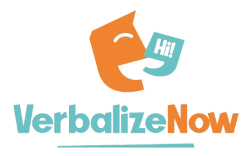Remember the four learning styles we talked about a few weeks back? As described by the world-renowned VARK learning model, they’re the visual, aural, read/write, and kinesthetic learning styles. Starting this week, we’re going to dig deep into each one. That means that if you still don’t know which one fits your learning style, you will soon!
Leading off our series is the visual learning style. Obviously, visual learners are best able to comprehend and retain information by seeing it, but this learning style is deeper and more complex than you may expect.
Meet the Visual Learner
It’s not surprising that people with this learning style best process information… wait for it… visually! Ok, maybe that was pretty obvious. If you were a kid that responded well to illustrations, diagrams, or PowerPoints during class, or simply hated having to read a lot of text, there’s a good chance you were a visual learner.
In general, visual learners tend to enjoy the following activities more than others:
- Drawing, including graphic design or photoshop
- Use of plans, charts, maps, and diagrams to illustrate a point
- Use of color, space, and shape in creative (or unexpected) ways
- An interest in visually striking, bold, or unconventional design
As you can see, these learning activities translate directly to a bunch of careers. Graphic designers, architects, artists, and designers of all types are quite possibly visual learners. In fact, their learning style may have influenced the interests that led them toward their chosen careers.
Strategies for Visual Learners
So you’re pretty sure you’re a visual learner: now what? Chances are, you’ve been already been gravitating toward visually-striking learning content when you want to gain a new skill. You probably are also no stranger to drawing a plan rather than writing one. If you’re still not 100% sure that you’re a visual learner, some of the cues that visually-oriented students give may remind you of yourself. For example, if you’ve ever said “I want to draw this out” or “can you show me?” when someone is trying to explain something to you may indicate this learning style.
In general, if you’re able to turn textual information into graphs or charts, the visual learner will have a better chance of retaining that knowledge. Making raw data into a “picture” of any kind will feed your inner visual learner.
If you find yourself needing to present information to visual learners, begin by experimenting with different fonts or colors. It’s also appealing when each page of a presentation is designed differently. Another method of appealing to visual learners is to try displaying information with symbols, which is something these learners often naturally do when trying to simplify information at work.
Another important way to appeal to visual learners is to make your writing as concise as possible. If you’ve got five solid pages of text with no visual aids, it’s going to overwhelm a visual learner. (However, it’d be perfect for the read/write learner, who we’ll discuss in two weeks!)
How This Relates to the Study of Business English
If you’re a visual learner, there are several learning strategies that can help you succeed during online business English classes. One thing that’s cool about Verbalize Now is our dedication to the VARK learning model. We understand that no two students are the same, so we continually strive to personalize our learning content for each of the four learning styles. In addition to our conversation-based online business English classes, we often use custom learning materials like videos and PowerPoints that are specifically designed for visual learners. Although it’s tough to appeal to all learning types, the visual learner is one of the easier types to accommodate in online English classes.
Verbalize Now is the online business English school for you: no matter what your learning style is! If you’d like to find out more about how we can improve your business English and change your life, contact us today.










